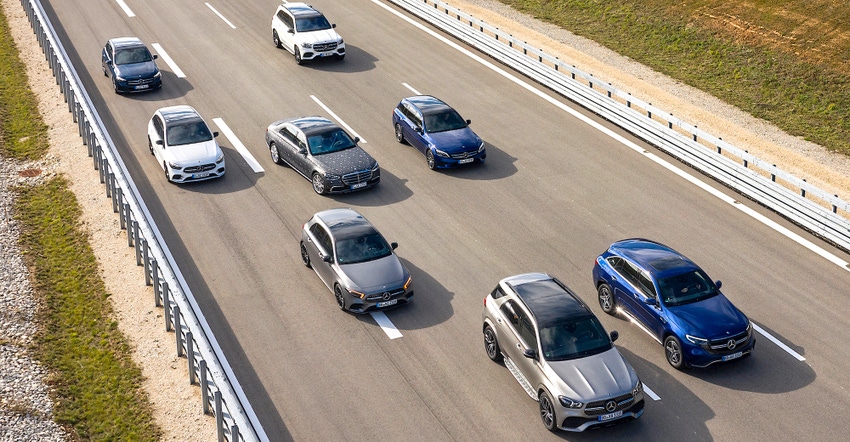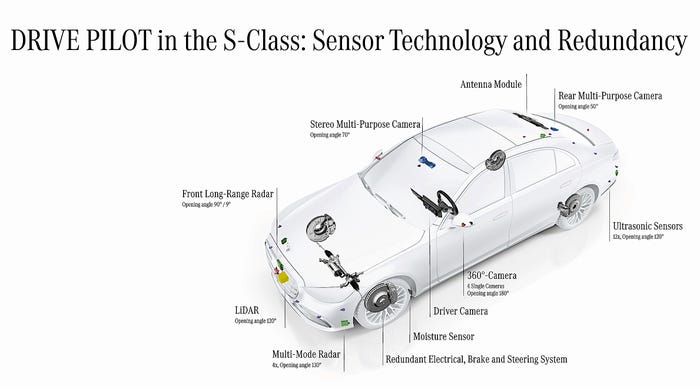Letting the car drive without constant supervision is a nerve-wracking experience at first.

Circulating the oval track at the Mercedes-Benz Immendingen proving grounds in the company’s EQS electric full-size sedan, Mercedes engineers did their best to encourage me to play Tetris on the car’s infotainment display even though I was seated behind the steering wheel.
I had the chance to ride along with an engineer who was relying on the company’s SAE Level 3 Drive Pilot assistance system previously, but now I was the one who had to take the leap of faith to look away from the road while driving. The feeling was reminiscent of my first experience with off-road hill descent control systems when you drive a 4x4 off a precipice without a foot on the brake pedal because the computer will automatically control the descent speed using the vehicle’s brakes and gearing.
Hill descent control has never let me down, even if the first few times involved some stomach-dropping alarm as I nosed the vehicle over the edge and onto the downhill. So when the Mercedes engineers pointed eagerly to the available distractions on the EQS’s display screen, I kept a wary eye forward, observing the other Mercedes employees who were piloting a fleet of cars and trucks around my car, simulating urban traffic.
I didn’t trust any of them, or the car. But eventually, the familiar falling shapes of Tetris demanded that I orient them to block off complete rows, and that is when the truck ahead made an emergency stop. The EQS’s Drive Pilot system squawked a warning and braked the car hard to avoid impact.
Then the traffic jam dissolved and we were on our way again. This time, again after directing my attention to the game, the car stopped. But now the truck ahead began backing quickly toward us. The EQS blasted its horn at the backing car, stopping it before impact.
Later, while cruising along in slow-but-steady traffic, another Mercedes driver swooped past, aggressively cutting across the bow of the EQS before continuing to the adjoining lane, as a driver who is about to miss their exit might do. Less-capable driver assistance systems would lose their cool in this situation, braking with hysterical fear at the sudden appearance of a vehicle so close in front.
But Drive Pilot is smart enough to recognize a passing intruder in the car’s personal space and gives the offender a second to be on the way. It also identified an approaching emergency vehicle, hugging the edge of the lane to make space for it to pass in accordance with German practice, where they slide aside in their lane rather than moving into the right lane and stopping, as is customary in the U.S.

These were all features described in the product’s announcement and demonstrated during our previous ride-along. But it is a different experience to be the driver who is ceding control to the computer and watching its reaction to these scenarios.
As before, the demonstration occurred at a maximum speed of 40 mph, which is the threshold agreed to with regulators for the introductory phase of the system. Mercedes engineers underscored that decisions like this are made in discussion with regulators, and are not dictated by the regulators, as both parties are in uncharted territory as Level 3 driving assistance debuts.
Drivers will also have to feel their way forward, as they become accustomed to turning over the driving task under some circumstances without keeping an eye on the road. At least, unlike with hill descent control, this will only require a figurative leap of faith and not a literal one!
About the Author(s)
You May Also Like





